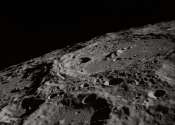Scientists begin studying 50-year-old frozen Apollo 17 samples
Scientists at NASA's Goddard Space Flight Center in Greenbelt, Maryland, recently received samples of the lunar surface that have been curated in a freezer at NASA's Johnson Space Center in Houston since Apollo 17 astronauts ...









